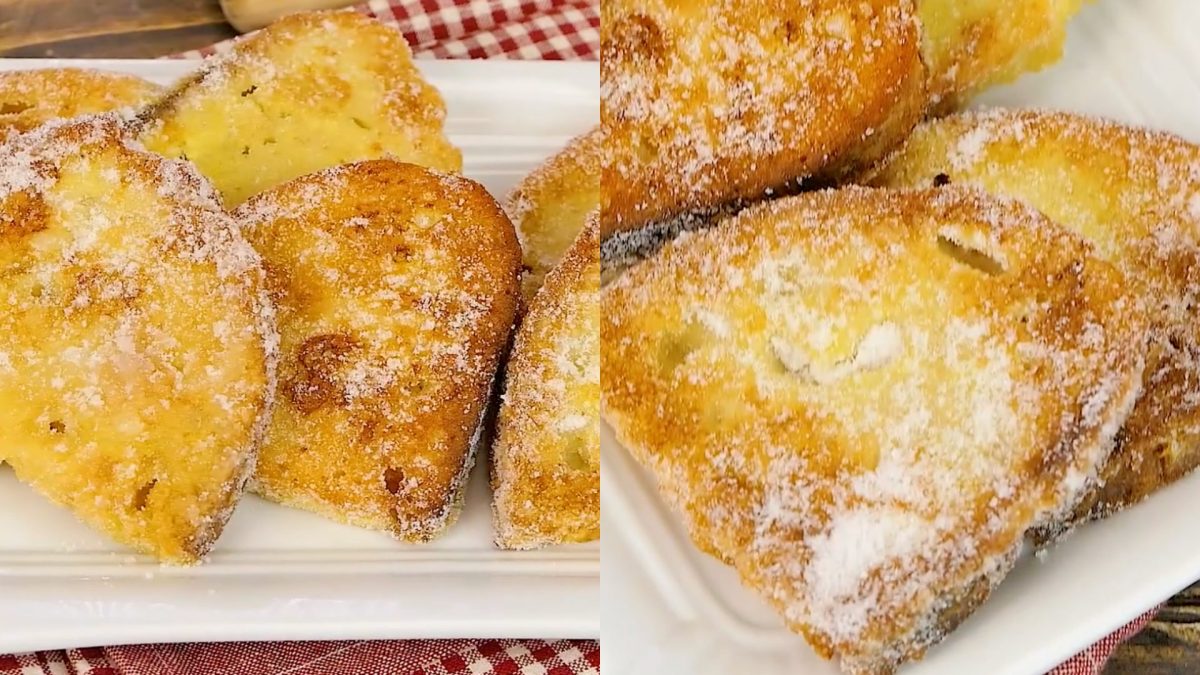
There’s a special kind of satisfaction in transforming a forgotten loaf of bread into something absolutely drool-worthy. At its core, it's just stale bread, milk, eggs, sugar, and a little oil, but somehow, the final result feels way fancier than the grocery list.
This dish transforms stale bread into a sumptuous treat by soaking thick slices in sweetened, spiced milk, then dipping them in beaten eggs and frying until brown. The result is a delightful combination of crispy exterior and tender-like interior, often finished with a sprinkle of cinnamon sugar or a drizzle of honey
Whether you serve it for a casual brunch, a dessert to impress your friends, or a late-night snack you "accidentally" made too much of, torrijas de leche always hit the spot.
The Sweet History of Torrijas de Leche
Torrijas have been a beloved tradition in Spain for centuries, especially during Lent and Easter. This dish was originally created as a way to use up stale bread, a necessity when food waste wasn't just frowned upon; it was unthinkable. Instead of tossing out bread that had seen better days, clever cooks soaked it in milk, or sometimes wine, coated it in eggs, and fried it.
In medieval Spain, torrijas were often served to women recovering from childbirth, thanks to their hearty, comforting nature. Over time, torrijas became a springtime staple and eventually a year-round treat. Modern versions might get fancy with cinnamon, honey, or even flavored syrups, but the basic idea remains the same.
Pro Tips for the Best Torrijas de Leche
- Opt for bread that's a day or two old. Breads like baguettes, ciabatta, or country loaves work beautifully because they hold their shape without turning to mush.
- Don’t over-soak the bread. Let it absorb milk, but don’t leave it swimming for too long, because you want a nice soak, not soggy sadness.
- Beat the eggs thoroughly. A smooth, well-beaten egg mixture coats the bread evenly and cooks up to a beautiful golden finish.
- Give your torrijas a quick rest on paper towels to avoid greasy bottoms.
- Torrijas taste best warm, when the contrast between the soft center and the crisp coating is just right.
What Kind of Bread Is Best for Torrijas?
Hearty, slightly stale bread is ideal. Think rustic loaves with a bit of chew, not thin sandwich slices, which can fall apart when soaked.
Can I Use Fresh Bread?
You can use fresh bread if you’re in a pinch, but it’s trickier. Slightly dry it out in the oven at low heat first to mimic the texture of stale bread.
How Sweet Should Torrijas Be?
It’s really up to you. Traditional recipes use a good coating of sugar, but you can dial it back or even drizzle a little honey instead.
Are Torrijas Always Sweet?
Mostly, yes. But savory versions exist, especially those soaked in broth instead of milk and finished with herbs instead of sugar.
Can I Bake Torrijas Instead of Frying?
You can! Bake them on a greased sheet at 180°C (350°F) until golden, flipping halfway through. The texture will be different but still delicious.
Why Are My Torrijas Too Soggy?
Probably too much milk or soaking the bread for too long. Next time, just give them a good dunk instead of a long bath.
How to Store Any Leftovers
When refrigerated, they’ll keep for about 2–3 days. To reheat, pop them in the oven at 160°C (320°F) for a few minutes to re-crisp and avoid the microwave unless you like your torrijas soft and steamy.
Ingredients
How to Make Torrijas de Leche

Lay out your bread slices in a shallow dish. Pour the milk generously over them and let them sit just long enough to absorb the milk without falling apart.
Lay out your bread slices in a shallow dish. Pour the milk generously over them and let them sit just long enough to absorb the milk without falling apart.

In another dish, beat your eggs well. Carefully lift each soaked slice and coat it fully in the egg mixture.
In another dish, beat your eggs well. Carefully lift each soaked slice and coat it fully in the egg mixture.

Heat a good layer of oil in a frying pan over medium heat. Fry each slice for about 3 minutes on each side, until they turn golden and slightly crisp.
Heat a good layer of oil in a frying pan over medium heat. Fry each slice for about 3 minutes on each side, until they turn golden and slightly crisp.

As soon as the torrijas are done frying, move them to a plate covered in sugar and flip them to coat both sides generously. Stack them high and serve while still warm.
As soon as the torrijas are done frying, move them to a plate covered in sugar and flip them to coat both sides generously. Stack them high and serve while still warm.

;Resize,width=767;)
